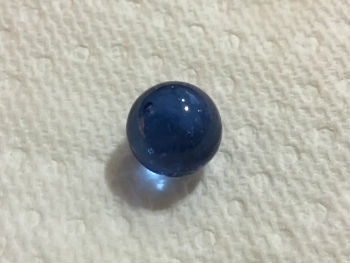 It was time to replace the cruddy old kitchen sink fixture with a newer model. The existing faucet, which came with the house, was too short to get pots and bottles under it; even better, the scale and corrosion around the sprayer head was so gross-looking that no one wanted to use it. After doing some research, we ordered a sleek stainless fixture online. It had arrived, so we set about installing it.
It was time to replace the cruddy old kitchen sink fixture with a newer model. The existing faucet, which came with the house, was too short to get pots and bottles under it; even better, the scale and corrosion around the sprayer head was so gross-looking that no one wanted to use it. After doing some research, we ordered a sleek stainless fixture online. It had arrived, so we set about installing it.
As with many projects around here, what should have been a relatively straightforward and manageable project became a real pain. One of the nuts holding the faucet in place under the sink was screwed on so tightly that it required a trip to the local home improvement store to get a special tool to loosen it. Who does this, tightening screws a ridiculous amount??
After the tool was procured and the nut was broken loose, the faucet was installed without much additional drama…until we turned the water back on and realized there was an unusually low hot water flow. The hot water flow has never been as strong as the cold, but it actually became a trickle. Seriously??
The water was turned back off and the hot water line was inspected. What we didn’t expect to find was a marble blocking the line. A blue glass marble. What was a marble doing in there, and how would something like that get in there?
We removed the marble, turned the water back on, and the water pressure was like a fire hose! An internet search on the marble indicates that these were used in check valves in older hot water heaters. They’re obviously not supposed to migrate out of the hot water “nipple”, but clearly they do, so if you find a blue glass marble in your hot water line, you now know where it may have come from.
